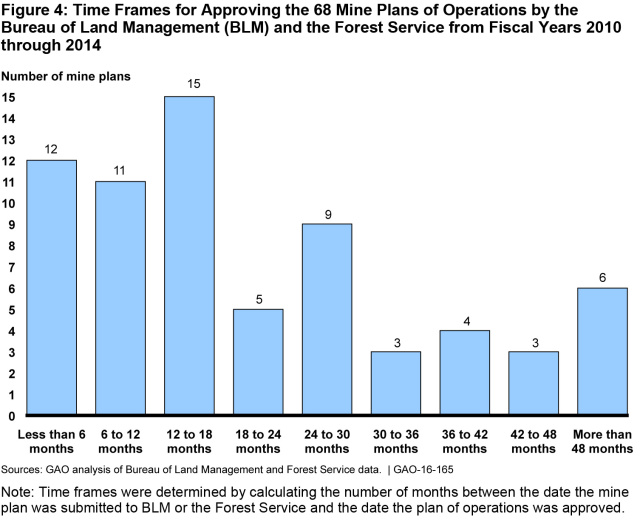Mining for Gold and Other Minerals on Federal Lands
- reviews the proposed plan,
- conducts an environmental assessment,
- approves (or rejects) the proposed plan,
- establishes a reclamation bond, which covers estimated costs associated with reclaiming the mine site once operations have ceased and that the agency can use to reclaim the site if the operator fails to do so, and
- authorizes mining operations.
 (Excerpted from GAO-16-165)
(Excerpted from GAO-16-165)
 (Excerpted from GAO-16-165)
(Excerpted from GAO-16-165)
- hold pre-plan-submittal meetings with operators to ensure that their applications include all the necessary information, and
- establish a fee structure for mine plan processing activities.
- Questions on the content of this post? Contact Anne-Marie Fennell at fennella@gao.gov.
- Comments on GAO’s WatchBlog? Contact blog@gao.gov.

GAO's mission is to provide Congress with fact-based, nonpartisan information that can help improve federal government performance and ensure accountability for the benefit of the American people. GAO launched its WatchBlog in January, 2014, as part of its continuing effort to reach its audiences—Congress and the American people—where they are currently looking for information.
The blog format allows GAO to provide a little more context about its work than it can offer on its other social media platforms. Posts will tie GAO work to current events and the news; show how GAO’s work is affecting agencies or legislation; highlight reports, testimonies, and issue areas where GAO does work; and provide information about GAO itself, among other things.
Please send any feedback on GAO's WatchBlog to blog@gao.gov.
